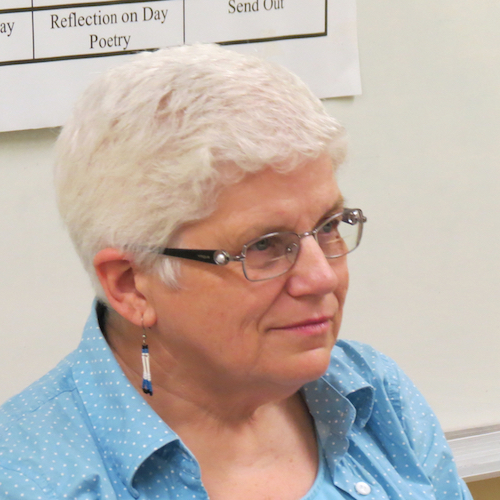At the IAF Conference in Ottawa in 2018, I had the opportunity to co-facilitate a session with two indigenous colleagues. The topic of the session was reconciliation between settlers and indigenous people, and we needed a cross-cultural team to facilitate the event.
The three of us arrived early and all pitched in to set up the room appropriately and make sure each of us had what we needed for our parts. During the session we smoothly transferred the leadership of the sections of the session between us.
Harold Tarbell, who is Mohawk, gave the opening prayer and guided the opening circle where we all introduced ourselves and why we were here. Donna Lyons, who is Ojibwe, presented an amazing visual context of indigenous history. I, who am a settler of European descent, followed, facilitating a consensus workshop on what we can do as facilitators to promote reconciliation.
Although the three of us had not worked together before, the facilitation was seamless and led to great learnings and insightful plans. It was a delightful and memorable experience for both facilitators and participants!
Co-facilitation, when the facilitators share common values and have planned carefully together, can be of great benefit. Participants respond differently to different personalities leading them, experiencing more diverse ways to participate. A co-facilitator while at the side of the room can observe the group’s responses and help guide any changes that need to happen to meet their needs. Facilitators can learn from each other as they watch each other work.
Co-facilitation can go terribly wrong. In a story I heard some time ago, the co-facilitators had not planned the session together, and were not clear on their roles within the meeting. They had not explored their common values, and were acting on different assumptions of how a group should work together. Some years ago, I was to follow someone who thought they were a facilitator, and had just told the group emphatically what they should think, then turned it over to me. I had to undo the damage in the group’s self-esteem and creativity in order to bring out their wisdom, without undermining the person who went before me.
Co-facilitation requires giving up one’s ego and the need to be acknowledged as the one leader of the group. It requires trusting your colleague, exploring their way of approaching the group when you are planning, and waiting in the session to see what the result of their work is. It requires curiosity about process as well as the content that the group is coming up with. It also requires paying attention at each moment, so if your co-facilitator is struggling and needs support, you can provide it respectfully on behalf of the group.
Co-facilitation can be a joy, as you learn from each other, and have someone to test your ideas of process with before you start.






